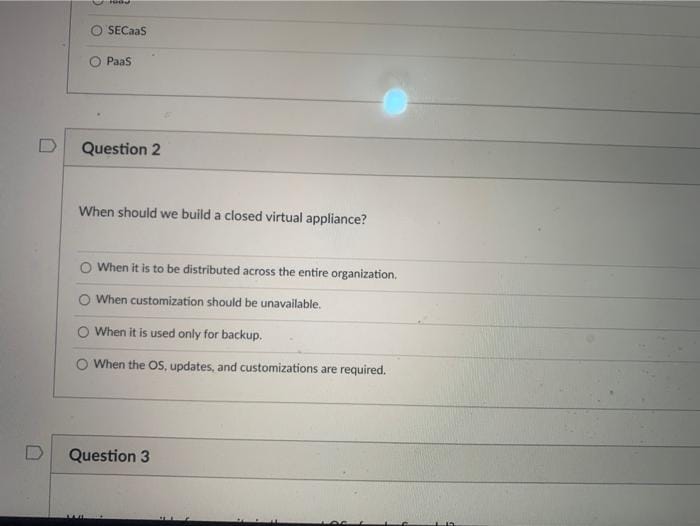
When it comes to the incredible world of visual development, have you ever wondered what it entails? Well, let’s dive right in and explore the fascinating realm of visual development together! What is visual development, you ask? Visual development refers to the process by which our ability to see and interpret visual information develops, from the moment we are born and throughout our lives.
From the very beginning, our eyes are like little explorers, taking in the world around us. As we grow, our visual system undergoes an amazing transformation, allowing us to see colors, shapes, and depths with greater clarity and understanding. Through this journey of visual development, our eyes and brain work together to perceive and make sense of the visual world.
Why is visual development important? Well, think about it this way: everything we learn, experience, and interact with relies heavily on our ability to see. Whether it’s reading, playing sports, or even appreciating art, our visual development plays a crucial role in shaping our understanding of the world. So, join me as we unravel the mysteries of visual development and discover the wonders that lie within our eyes and brains!

What is Visual Development?
Visual development is a term used to describe the process by which an individual’s visual system matures and develops. It encompasses various aspects of vision, including visual acuity, depth perception, color vision, and the ability to track objects and recognize shapes. Visual development begins in infancy and continues into early adulthood, with the brain and eyes working together to process visual information and provide us with a rich and meaningful view of the world around us.
During the early stages of visual development, infants start to form the basic building blocks of vision. They learn to focus their eyes on objects, track moving stimuli, and develop visual preferences.
As they grow, their visual system becomes more refined, allowing them to perceive depth, discern fine details, and make sense of complex visual scenes. This developmental process is influenced by both genetic factors and environmental experiences, such as exposure to visual stimuli and interaction with caregivers.
Visual development plays a crucial role in shaping our perceptual abilities and cognitive skills. It has a direct impact on various aspects of our lives, including learning, social interactions, and overall well-being. Understanding the different stages of visual development and providing appropriate visual stimulation and support can help optimize this process and promote healthy vision and visual functioning.
Importance of Visual Development in Early Childhood
Early childhood is a critical period for visual development. During this time, the visual system undergoes rapid growth and refinement, laying the foundation for future visual abilities. Proper visual development in early childhood is essential for several reasons:
- Academic Success: Visual skills, such as visual discrimination, visual memory, and eye-hand coordination, are crucial for reading, writing, and overall academic performance.
- Social Development: Clear and accurate vision enables children to recognize facial expressions, interpret body language, and engage in social interactions effectively.
- Motor Skills: Visual development is closely linked to the development of gross and fine motor skills, hand-eye coordination, and spatial awareness.
To support optimal visual development in early childhood, it is important to provide a visually stimulating environment that encourages exploration, play, and exposure to a variety of visual stimuli. This can include age-appropriate toys, books with colorful illustrations, and opportunities for outdoor play to enhance visual experiences.
Factors Influencing Visual Development
Several factors can influence visual development, including genetic predispositions, environmental factors, and individual experiences. Here are some of the key factors that play a role:
- Genetics: Inherited factors can significantly impact visual development, including the potential for developing eye conditions or refractive errors.
- Early Stimulation: Providing infants and young children with visually stimulating toys and activities can support the development of specific visual skills and promote healthy vision.
- Nutrition: Proper nutrition, particularly during pregnancy and early childhood, is essential for the development of a healthy visual system.
- Health and Wellness: Overall health and wellness, including regular eye exams, can help identify and address any vision problems that may impact visual development.
Understanding these factors can help parents, caregivers, and healthcare professionals create an environment that supports optimal visual development and addresses any potential issues early on.
How to Promote Healthy Visual Development
There are several steps individuals can take to promote healthy visual development throughout their lives:
- Regular Eye Exams: Routine eye exams, starting in infancy and continuing into adulthood, can help detect and address any vision problems that may affect visual development.
- Eye-Healthy Habits: Practicing good eye hygiene, such as taking regular breaks from screen time, maintaining proper distance from screens, and ensuring adequate lighting, can help protect and maintain healthy visual development.
- Proper Nutrition: A balanced diet that includes essential nutrients like vitamin A, omega-3 fatty acids, and antioxidants can support the healthy development of the visual system.
- Visual Stimulation: Engaging in activities that promote visual development, such as puzzles, coloring, and outdoor play, can enhance visual skills and abilities.
By incorporating these strategies into daily routines, individuals can support their visual development and maintain healthy vision throughout their lives.
Visual Development in Adulthood
Visual development is not limited to childhood and adolescence. It continues into adulthood, although at a slower pace. While the basic visual system is already in place, ongoing development occurs in the areas of visual processing, perceptual skills, and visual cognition.
Visual Processing Skills
Visual processing skills refer to the brain’s ability to interpret and make sense of visual stimuli. These skills include:
- Visual attention: The ability to focus on relevant visual information while filtering out distractions.
- Visual memory: The ability to retain and retrieve visual information for future reference.
- Visual integration: The ability to combine and integrate various visual elements into a coherent whole.
Continued engagement in visually stimulating activities, such as reading, solving puzzles, and engaging in hobbies that require visual processing, can help maintain and even enhance these skills in adulthood.
Perceptual Skills
Perceptual skills involve the ability to interpret and make sense of visual information based on past experiences, knowledge, and context. These skills include:
- Visual discrimination: The ability to differentiate between similar visual stimuli.
- Depth perception: The ability to perceive the relative distances of objects in the visual field.
- Object recognition: The ability to identify and categorize objects based on their visual features.
Maintaining an active and enriched visual environment, engaging in activities that challenge perceptual skills, and seeking new visual experiences can help keep these skills sharp and adaptable.
Visual Cognition
Visual cognition refers to the higher-level cognitive processes that involve visual information. This includes tasks such as problem-solving, decision-making, and visual reasoning. Activities that require mental visualization and manipulation of visual patterns or objects, such as playing chess or solving complex puzzles, can help exercise and improve visual cognition in adulthood.
Wrap-Up
Visual development is a dynamic and lifelong process that begins in infancy and continues into adulthood. It involves the growth and refinement of the visual system, impacting various aspects of our lives, including academic success, social development, and overall well-being.
Factors such as genetics, early stimulation, nutrition, and regular eye care play crucial roles in promoting healthy visual development. By understanding these factors and adopting habits that support visual development, individuals can optimize their vision and maintain visual health throughout their lives.
Frequently Asked Questions
Welcome to our FAQ section on Visual Development! Below, you’ll find answers to some of the most common questions about this fascinating topic.
1. How does visual development occur in infants?
Visual development in infants is a remarkable process that occurs rapidly during the first few months of life. At birth, a baby’s vision is not fully developed, but it gradually improves as the visual system matures. Initially, infants can only see objects that are very close to their face, and their vision is blurry. However, as they grow, their visual acuity improves, and they begin to develop depth perception and the ability to focus on objects at various distances. This development is influenced by both genetic and environmental factors such as stimulation and experiences.
Infants engage in various visual activities, such as tracking objects, following faces, and exploring their surroundings visually. These activities help stimulate their visual system and promote the development of visual skills. By engaging in these activities, infants refine their visual abilities and gradually gain better control over their eye movements and coordination, laying the foundation for visual development and perception.
2. What role does visual development play in a child’s learning?
Visual development plays a crucial role in a child’s learning and overall development. Vision is the primary sense through which children gather information about the world around them. It enables them to navigate their environment, recognize faces, and interpret visual cues. When visual development is impaired, it can significantly impact a child’s ability to learn and interact with their surroundings.
The development of visual skills, such as visual acuity, depth perception, and visual processing, is closely linked to a child’s cognitive and motor development. These skills are essential for reading, writing, understanding spatial relationships, and participating in sports or other activities. Visual development also affects a child’s attention and focus, which are critical for absorbing information in the classroom or any learning environment. Therefore, it is important to monitor and support a child’s visual development to ensure optimal learning and overall growth.
3. Can visual development be improved in adults?
Yes, visual development can be improved in adults through various interventions and exercises. Adult visual development focuses on enhancing specific visual skills or compensating for visual deficits. For example, individuals with vision problems like amblyopia (lazy eye) or strabismus (crossed eyes) can benefit from vision therapy, which is a specialized program of exercises that aim to strengthen the visual system and improve binocular vision.
Additionally, adults can engage in activities that promote visual cognition, such as puzzles, reading, or playing video games that require visual processing and hand-eye coordination. Regular eye exams and the use of corrective lenses, if required, are also crucial in maintaining optimal visual development in adulthood. By actively engaging in activities that stimulate the visual system, individuals can support and enhance their visual skills throughout their lives.
4. How does technology impact visual development?
In today’s digital age, technology has a significant impact on visual development, especially in children. Increased screen time from devices like smartphones, tablets, and computers can potentially affect visual health and development. Prolonged screen use can cause digital eye strain, dry eyes, and contribute to nearsightedness (myopia) development in children.
Furthermore, continuous exposure to screens may reduce the time children spend engaged in activities that promote visual development, such as exploring the outdoors, reading physical books, or engaging in imaginative play. It is, therefore, important for parents and caregivers to encourage a balanced approach to technology use, ensuring that children also participate in activities that exercise their visual system and promote healthy development.
5. How can parents support their child’s visual development?
Parents can play a crucial role in supporting their child’s visual development. Here are a few tips to consider:
– Ensure regular eye exams for your child to detect any potential vision issues early.
– Provide a visually stimulating environment by incorporating age-appropriate toys, books, and puzzles that encourage visual exploration and hand-eye coordination.
– Encourage outdoor play and physical activities, as they help with developing visual skills like depth perception and eye teaming.
– Limit screen time and establish healthy screen use habits, including taking regular breaks and practicing the 20-20-20 rule (looking away from the screen every 20 minutes at an object 20 feet away for 20 seconds).
– Promote proper eye hygiene by teaching your child to blink regularly and maintain a comfortable reading distance.
By implementing these practices, parents can provide a supportive environment for their child’s visual development and ensure their overall visual health.
Summary
Visual development is how our eyes and brain learn to see and understand the world around us. It starts when we are babies and continues throughout our lives. During visual development, we learn to focus our eyes, track moving objects, and recognize shapes and colors. It’s an important process that helps us navigate our environment and learn new things.
Visual development can be influenced by many factors, including genetics, environment, and experiences. It’s important to take care of our eyes and give them the right stimulation to develop properly. Regular eye exams and wearing glasses if needed can help ensure healthy visual development. So next time you see something interesting, take a moment to appreciate the amazing process of visual development that allows you to see and understand the world in all its beauty!






